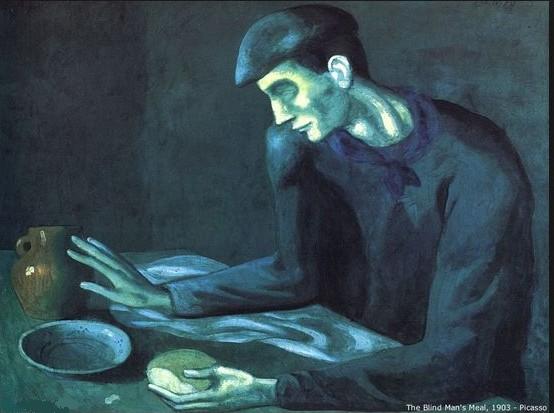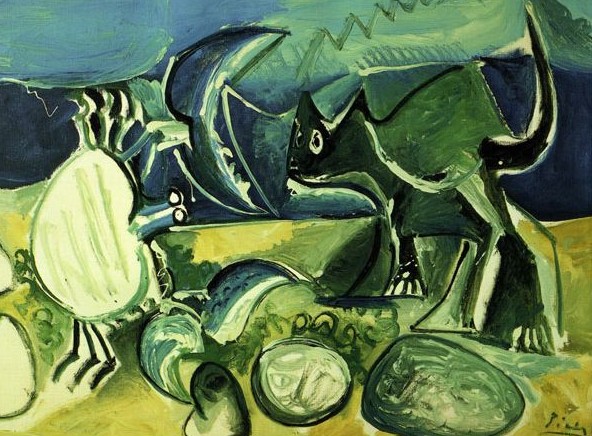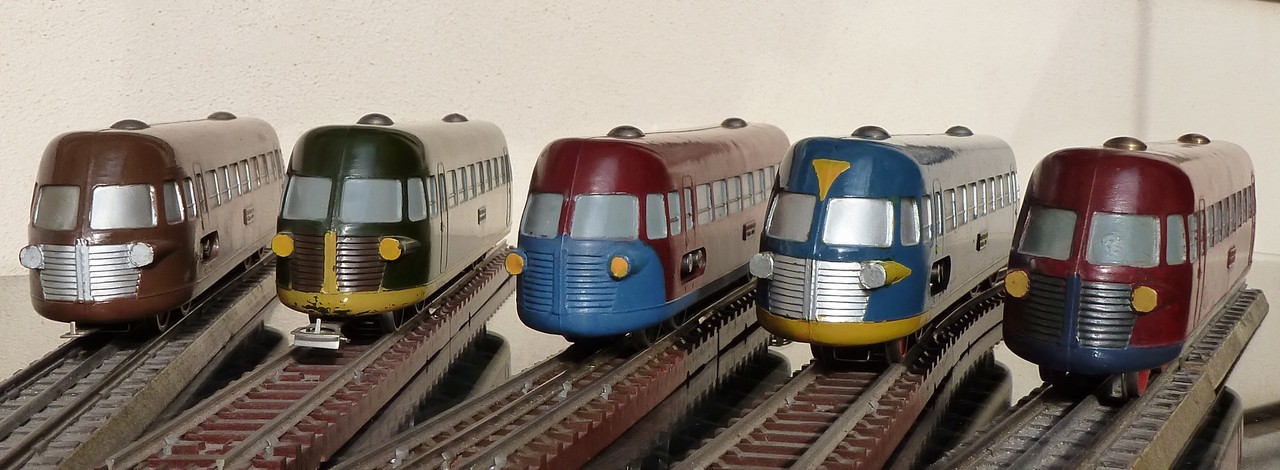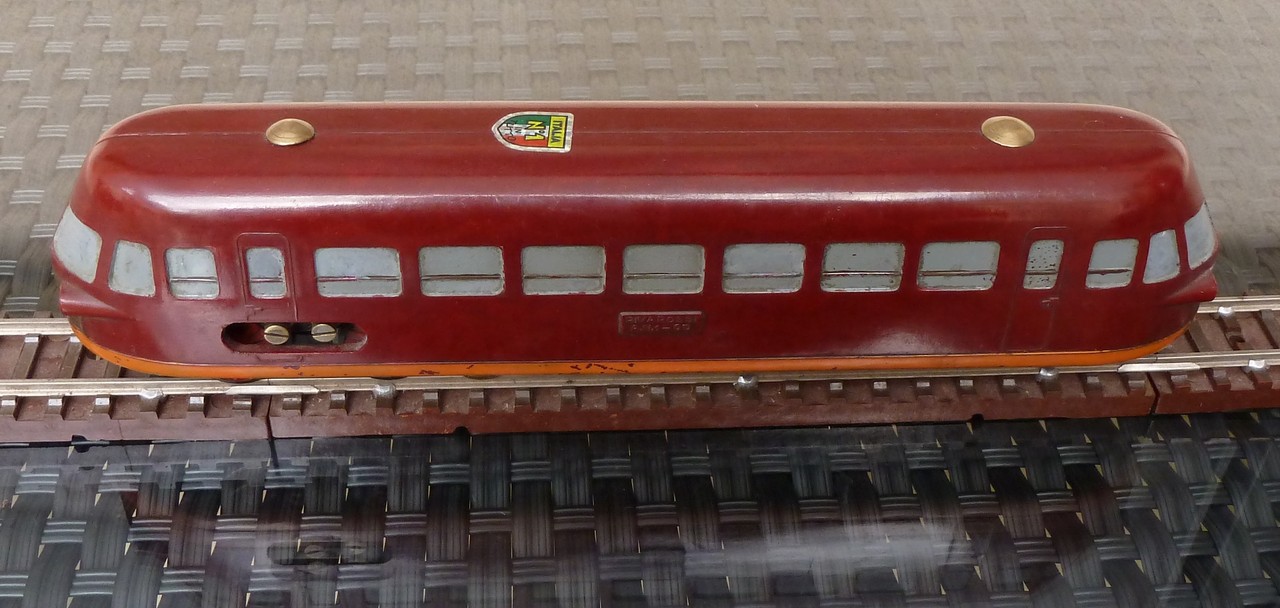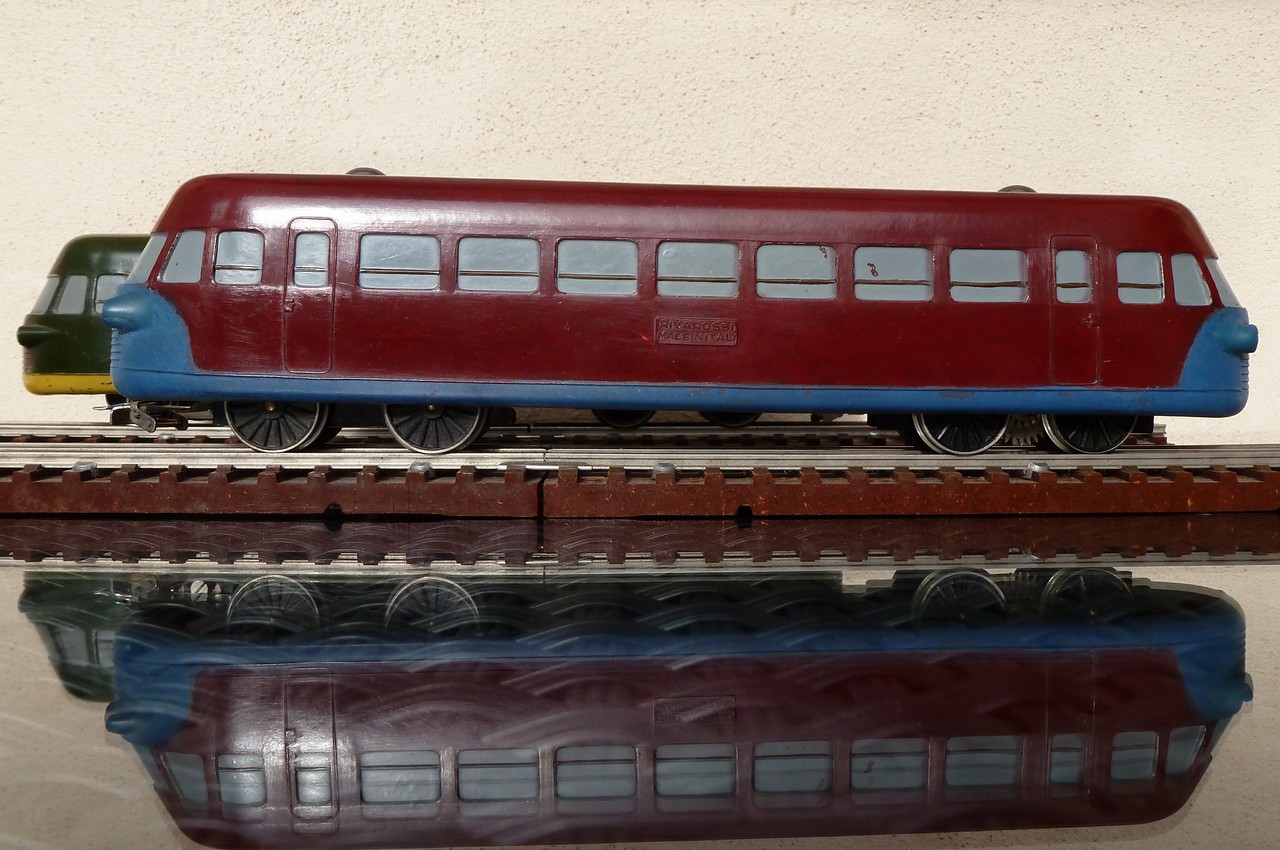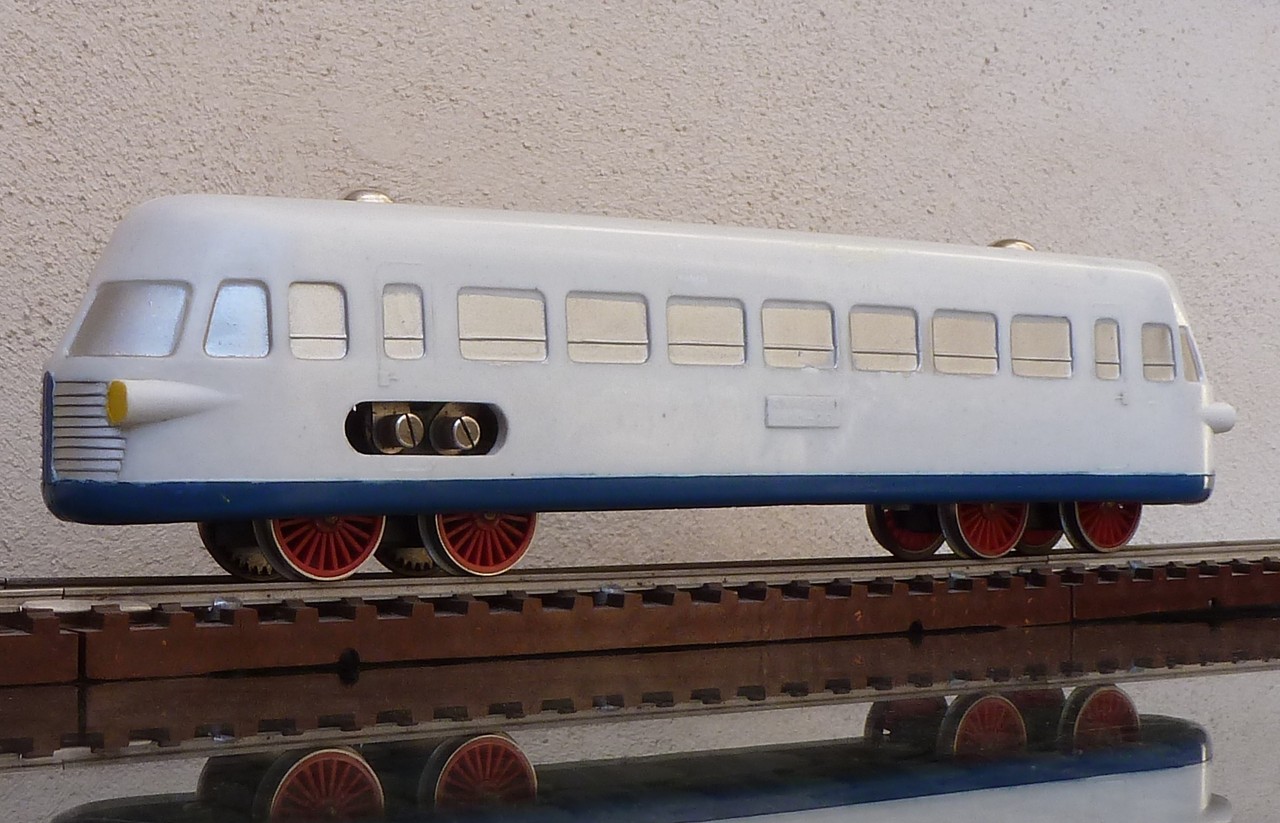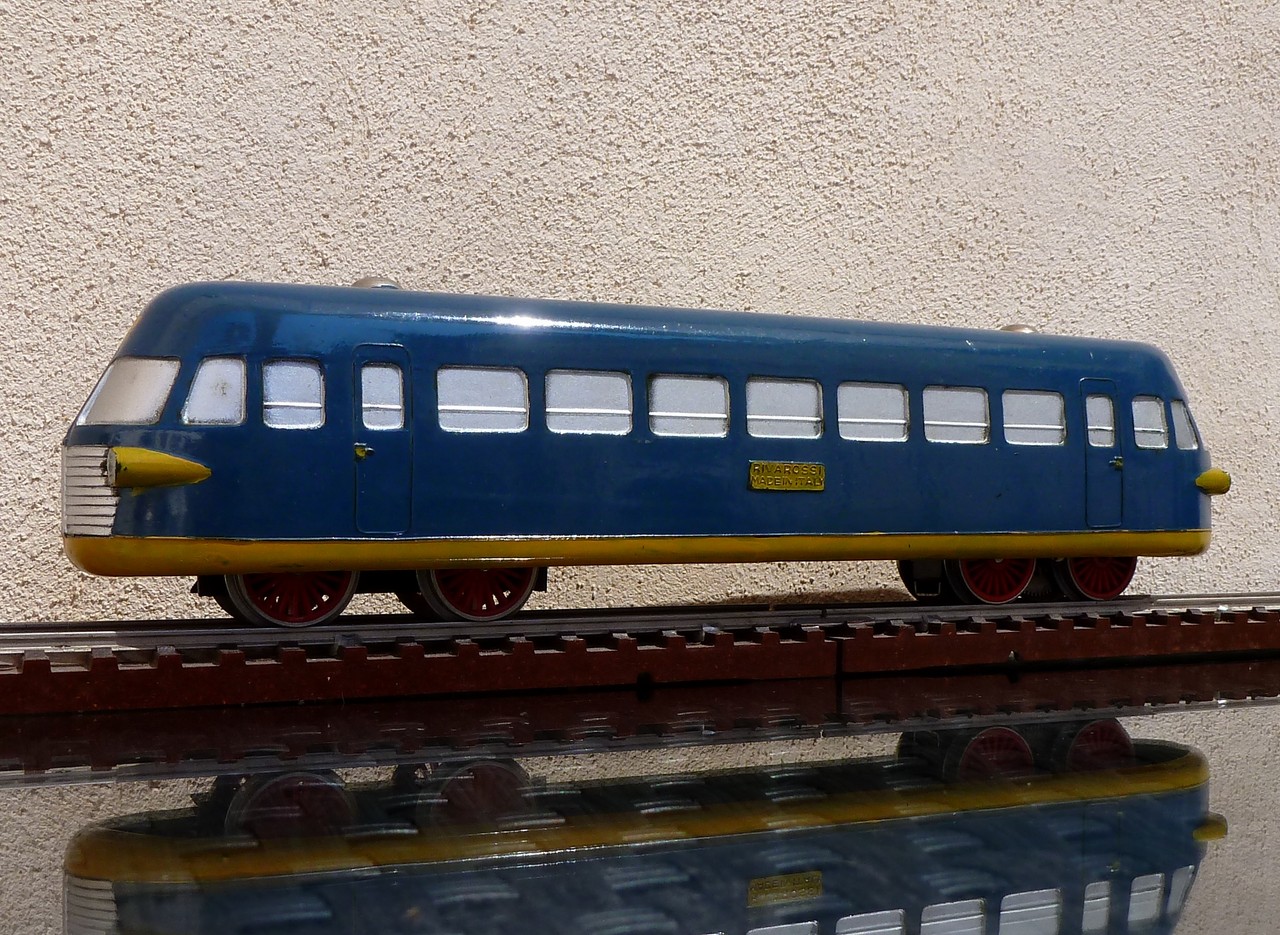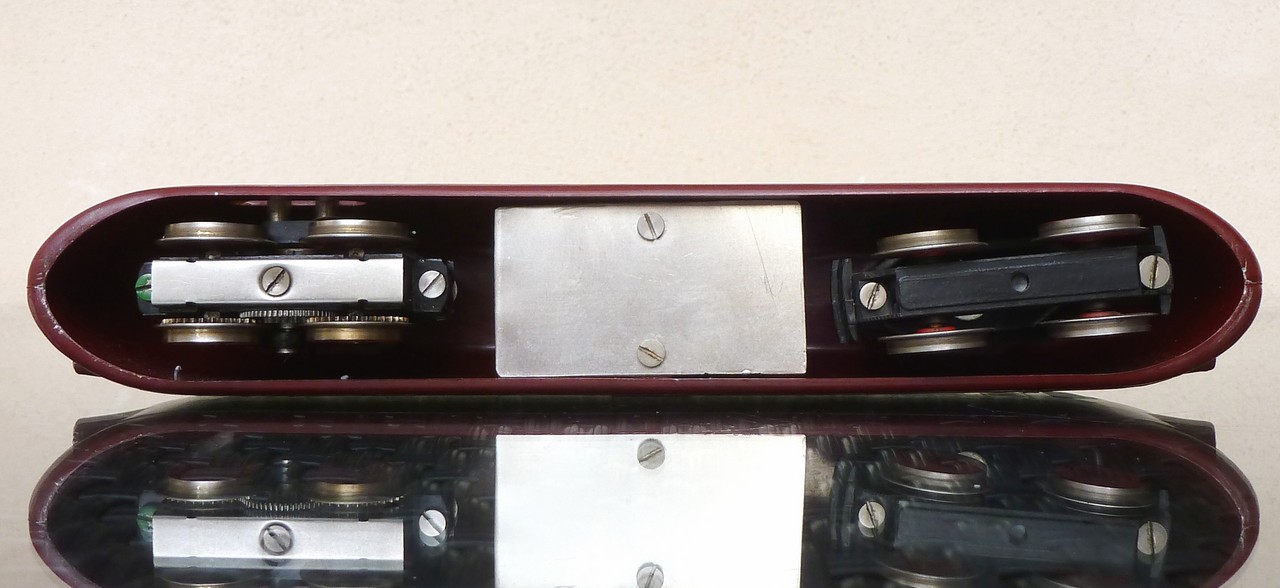Pablo Picasso – 1903 The blind man’s meal
AN 1 Rivarossi first type
(written by P.G.)
This railcar appears for the first time in the catalog of 1947 in versions AN 1, AN 1 Ec. and in the package I AN 1 / St. It is a freelance-railcar, inspired by railcars Breda of that time and still nicknamed “Littorine”. According to the catalog could be provided with three or two rails DC or AC. In 1948 appears AN 1/48 Standard with cuffs wheels of reduced height according to the American standard NMRA, as all drive series St 48, is sold to the end of ’49. In 1950-51 is proposed as AN 1 and as a set I AN 1 in Blue Series (AC three rails), as AN 1 / R and relative set I AN 1 / R in the Red series (CC two rails), in the box of the Green series AN 1 / V that is proposed until the end of 1952 when already the red series and blue series was proposed AN 1 in new design (Second series). In 1950 is proposed the Dummy without engine as AN 1 / T (Blue Series) and AN 1 / TR (Red series). It was designed to be produced at the lowest cost possible: – The shell is in bakelite colored in the mass . It has not pierced windows and trolleys are directly fixed to the roof with appropriate supports. So it does not need the frame. – The bodies of carts are common with those of A 2002 FNM – The bodies of motor bogies are common, in addition to the A 2002, even with the frames of the motors 626 and locomotives “Dockside 97” B & O. – Naturally the engines, of “type 1” and horizontal axis are common with the same machines and had the brushes accessible through an oblong hole present on one of the side walls. – There is no type of lighting. – A small cover fixed with two screws under the shell between the carts used to relay hosted the reverse for specimens in CA, or in many other in DC from 1947 to ’49, a small lead ballast. – The versions in DC do not require any electrical connection cable – The hook, only present in some items intended to tow a trailer, is that nickel of “type 1” or typical of the green series. Fixed directly to one of the trolleys through one of two fixing screws of the carriage to its support.
Beyond of what is written on the catalogs, are in the following colors: – Red colored in the mass with windows first gray then silver, silver radiator, blacks or blue, yellow headlights or silver, no band or band orange, yellow or blue. In some exemplary (1949) blue band side is enlarged at the ends, and also incorporates the radiators. – Green colored in the mass with windows gray, yellow headlights, no band or yellow band or ivory – Beige (painted) with silver windows, radiators and headlights silver, with or without a red band. – Light blue (painted) with windows, headlights and radiator silver, yellow headlights, band and various finishes in yellow
– White, colored in the mass with the windows and radiators silver, yellow headlights, with or without blue band.
The rarest of this machine are the blue and the white.
It is hard to talk about the real versions of this machine, but we can follow the evolving technical and constructive indicating the essential characteristics:
1947
– Cart engine first type with body in bakelite, horizontal holes for passing the axes of the wheels can therefore only be removed by extraction of the wheels
– Wheels in bakelite with rays not perforated
– Socket via sliding contacts directly on the rails.
Normally the contacts are located just below the motor bogie for specimens in DC, in those in C/A the contacts to the rail are under the carriage crowds.
– Supports carts cast in metal
– Windows, gray, yellow headlights
– Carter between bogies in burnished brass and special form with lead ballast
– At the end of 1947 appear the wheels with metal rim that characterize these machines since 1948
– The screws are made of steel and brass

The photo depicts the 01 ‘AN 1 exhibited at the Milan Fair of 1947. It brings on the roof the logo “Italy Number 1 in everything” that characterizes all samples exposed in 1947 edition of the fair
1948
1949
– They appear the first red wheels ray pierced both beaded normal Standard 48, but some items retain black wheels
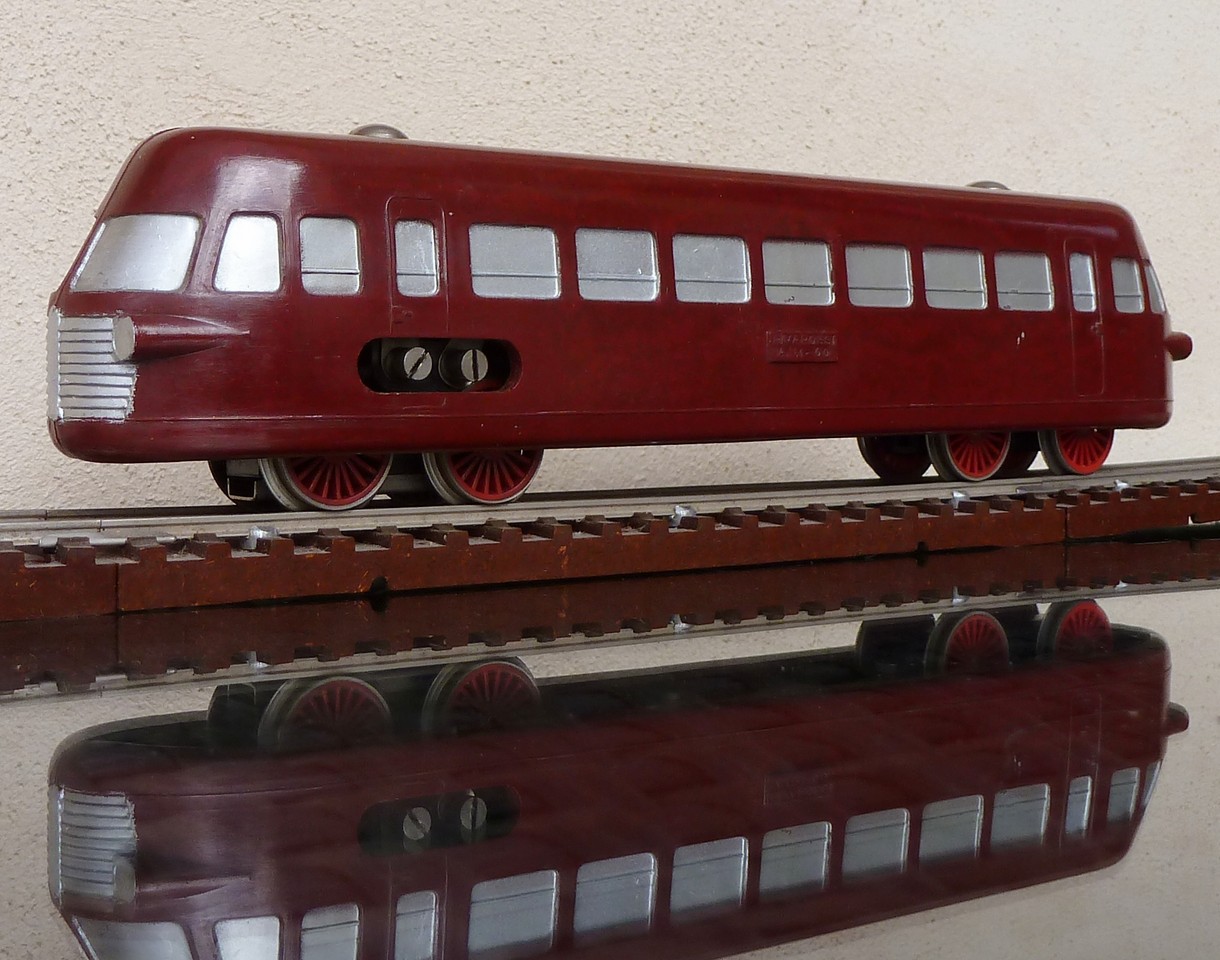
– Since 1949 is gradually introducing the motor bogie of the second type with slots for housing and axle housing lower metal (brass, burnished steel or nickel).
However the carriage of the first type was installed occasionally until the end of 1949.

– Holders of trucks are now almost always in bakelite.
– The casing between the carriages is now often painted in one of the body colors
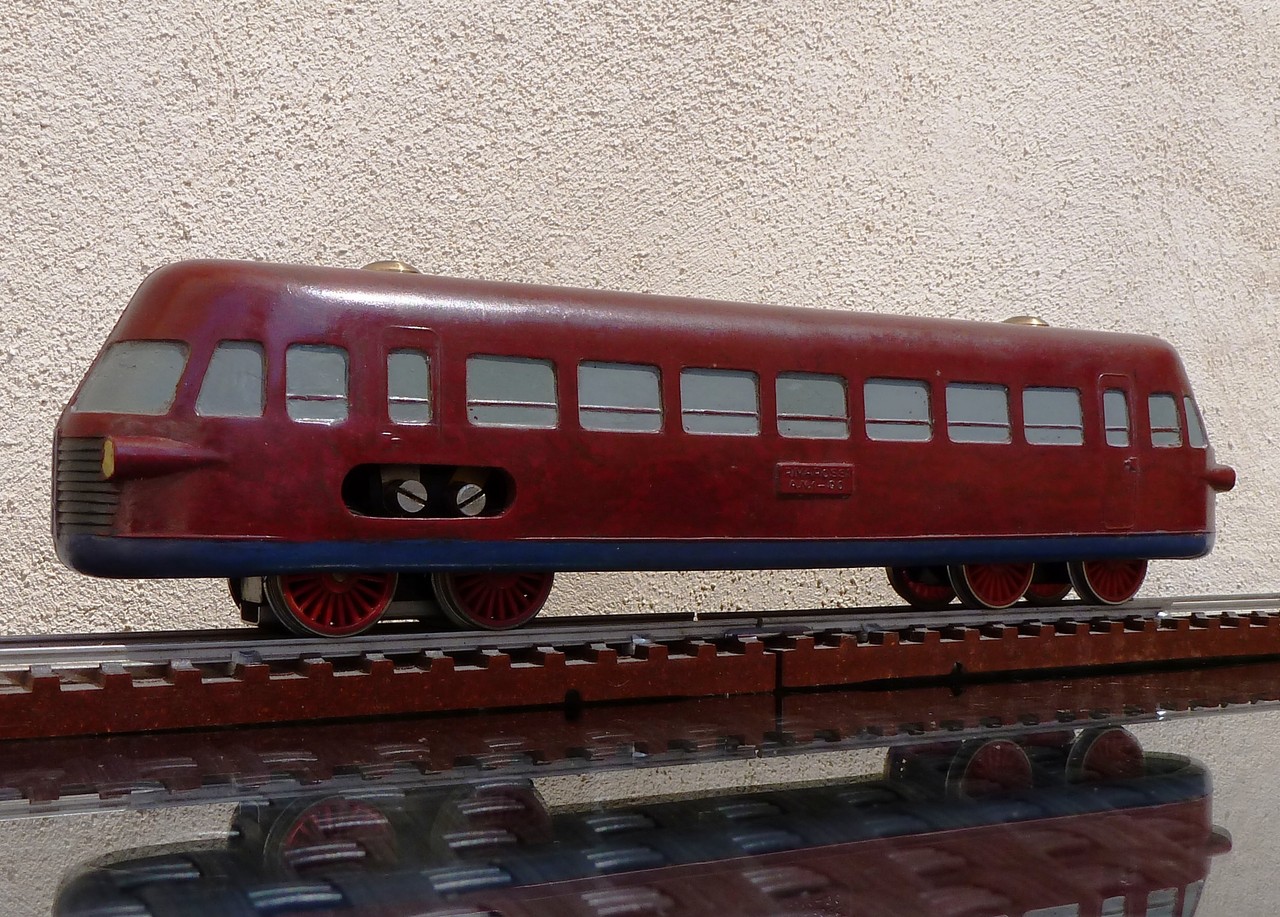
– Since 1949, some examples have the windows and headlights silver
– All screws are stainless
1950 – 1952
– All items have now carts engines second type, with lower housing nickel-plated steel or burnished
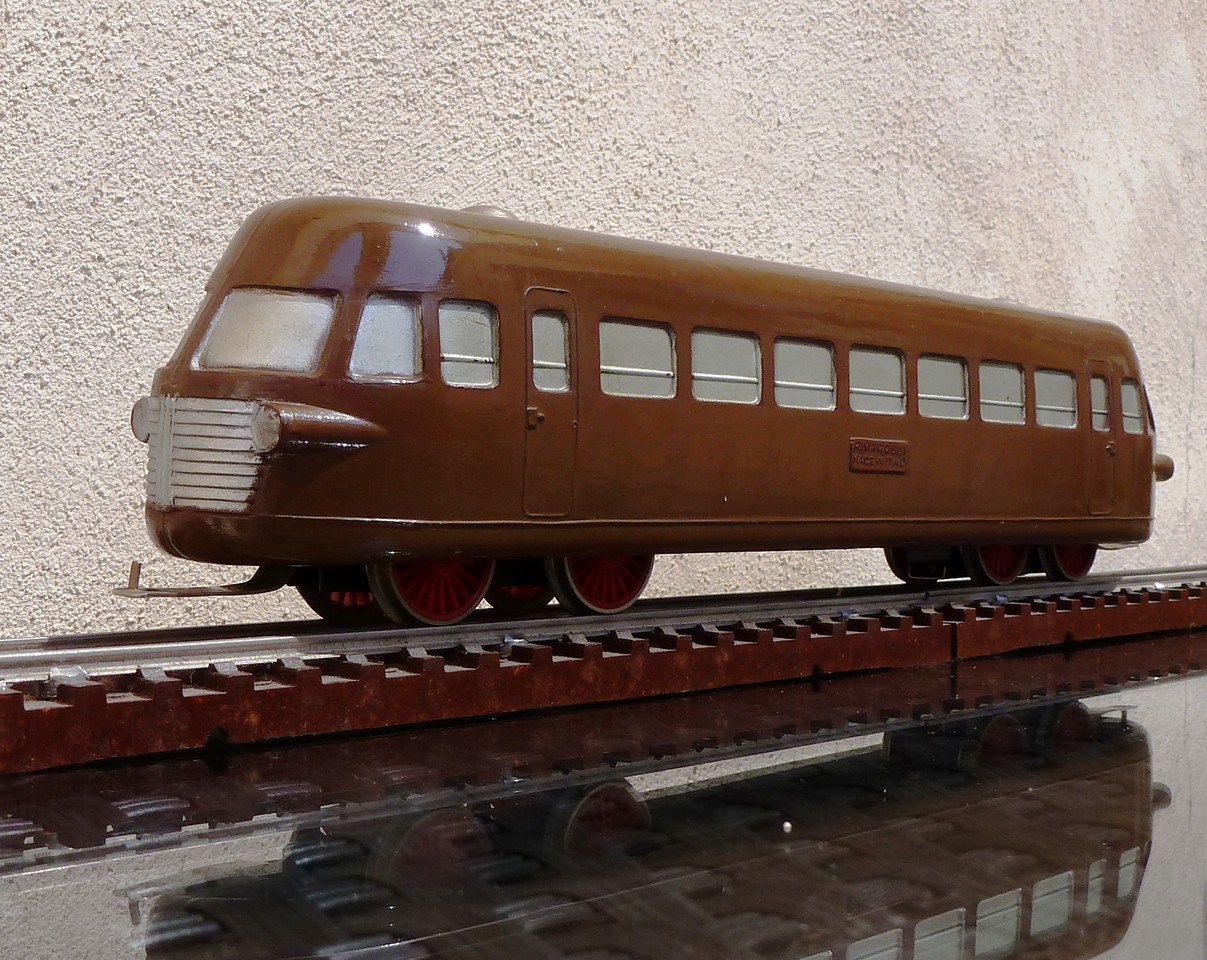
– Holders of carts can be bakelite or sheet brass bent.
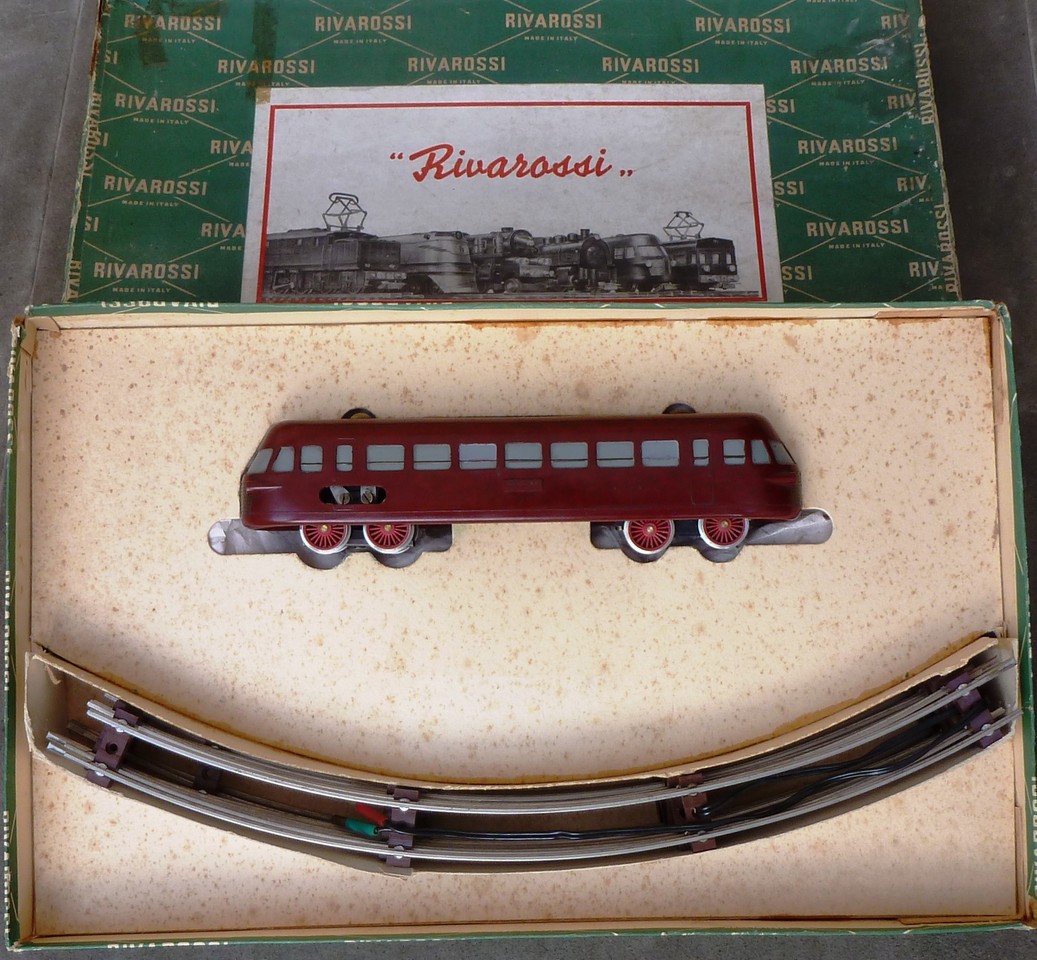
– The cover of the trolleys is now nickel-plated steel and rectangular in shape and can not stand any more ballast
– Windows and headlights are in silver
– The screws are almost always in aluminum, sometimes in steel
Back to Home page
(@ November 9, 2013)
